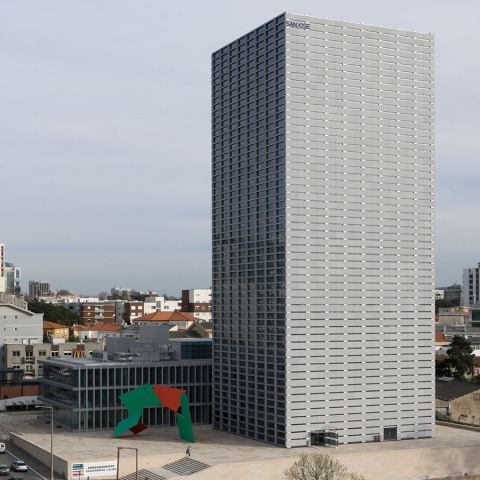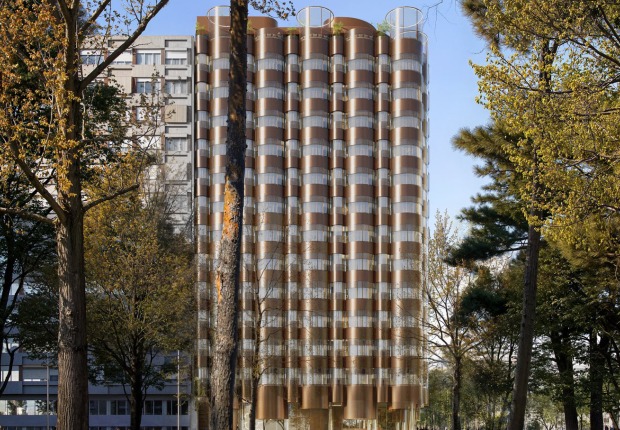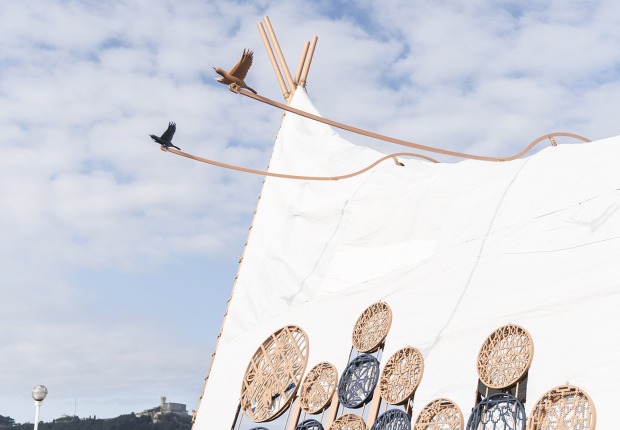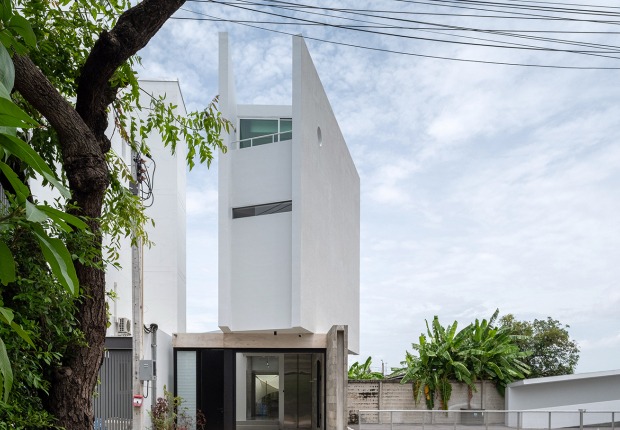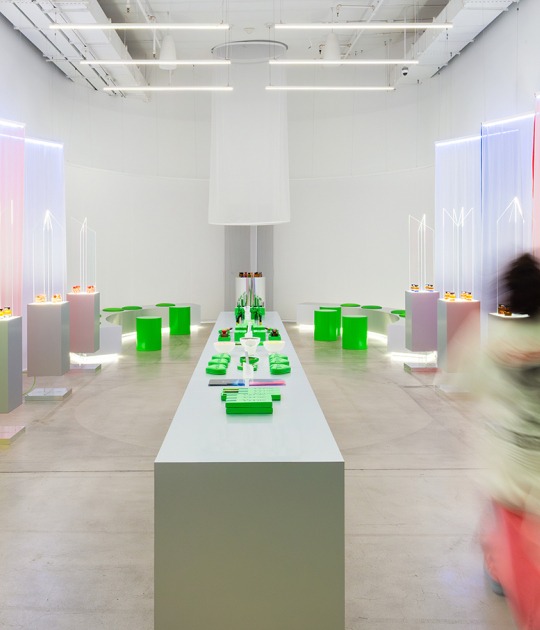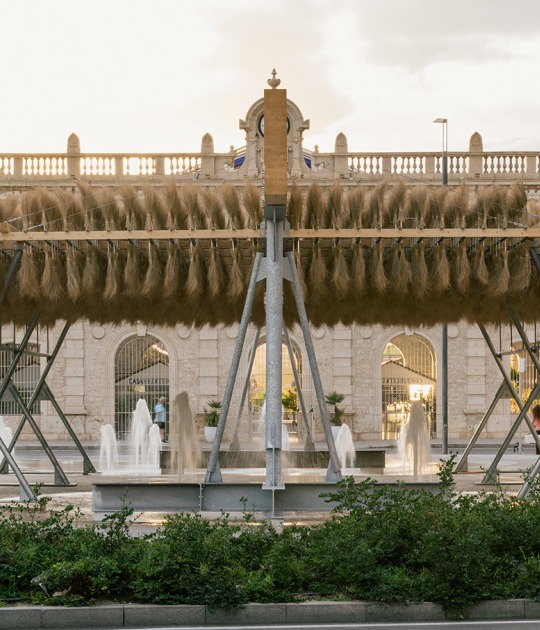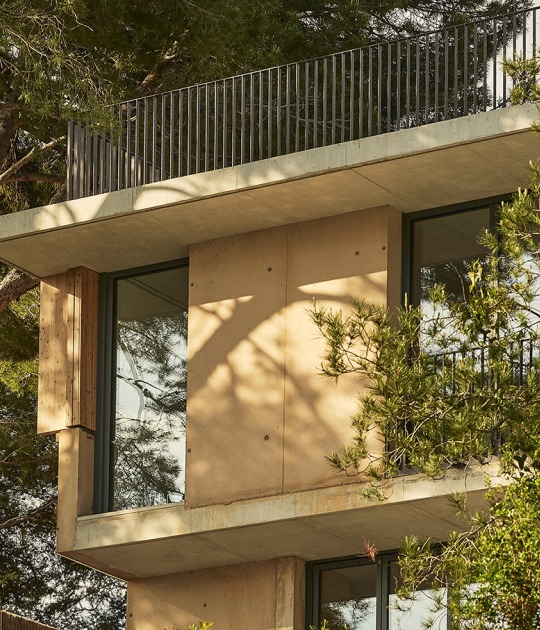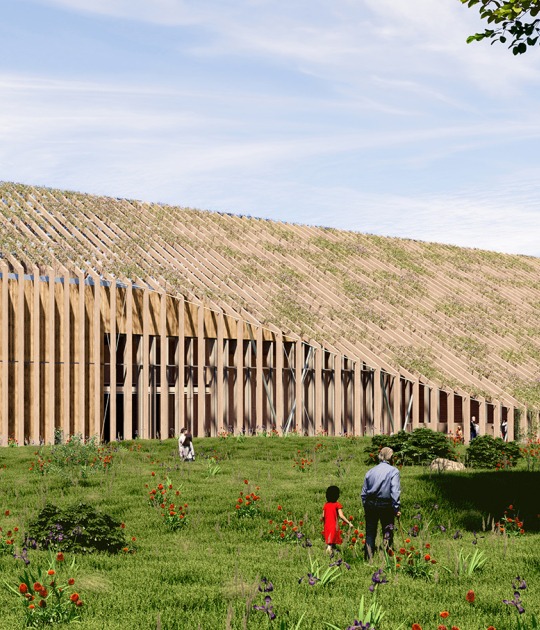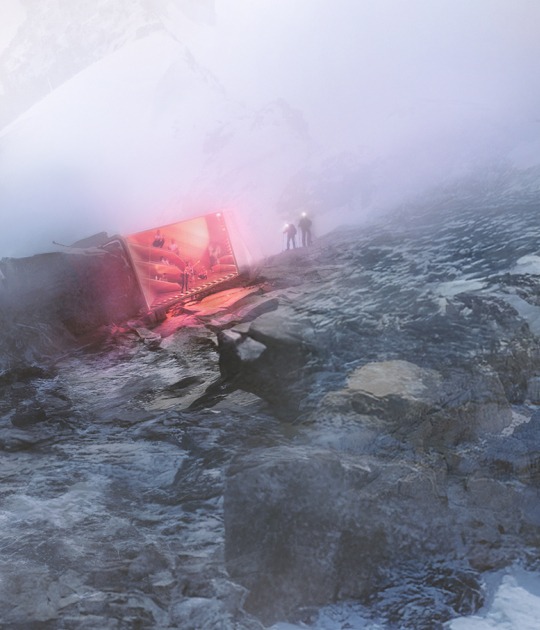On the platform, which houses two parking floors, stand: a four-level building, with a rectangular plan, which is linked to the scales of the nearby buildings, and a twenty story office tower, and squared floor plan, that elegantly separates itself from the alignment to the avenue, creating a transition space between the traffic of the bustling avenue and the building.
The building envelope is expressed in a modular way, showing its construction system as an image, and at the same time paying special attention to the orientation of the sun. The grid of the façade develops a composition that masks the different levels, generating the image of being much taller than its twenty floors develop.
In the front square it is worth highlighting the interesting sculpture by Ângelo de Sousa.
Project description by Eduardo Souto de Moura
The site is located where Boavista avenue breaks into discontinuous sections.
The solution consists of a level platform which incorporates two nearby volumes which re cast in different scales.
A low ribbon-like building allows for the enclosure more closely to approximate the sought-after anonymity.
The tower, set back from the avenue, rises up from the platform, waiting for further and future works of architectures still to come.
Small towns always have small architecture. When they become big, all the big buildings are inevitably designed by foreigners.
A tower is not a normal commission, much less so for me: I hadn't even designed an elevator at the time. I started out designing detached houses with an inside height of two meters and forty (centimeters), so at the outset I went about this project very reluctantly, backing away to leave room for the tower as in a frontal attack.
When I got a handle on the project and was ready to set to work, the fire department had already decided the heights; the British consultants had established the module of the pillars and the engineers the thickness of the floor slabs.
With the kernel of the building already decided by the safety regulations, its width merely became the result of the over-hang allowed for the floor slabs: twenty-seven meters.
Can the architecture of tower blocks have always been like this, a sort of “Big Mac” approach? Siza, who was building next door and had more experience of this kind of thing, confirmed it was. The profile was fixed and Vitruvio with his utilitas, firmitas and venustas was definitely old hat.
We were left to design the architecture of the building’s skin (Herzog was right). Meanwhile the proprietors were rapping out prêt-a-porter solutions: "No wood or steel… pre-fabricated concrete is too cheap… granite, yes, granite, we're in Porto, the city of granite."
I went beyond just designing a garment for the building by suggesting to the engineers we should design a structural façade. The structure is incontrovertible: without it the building would collapse. This calmed them down: "Engineering is a science, it’s not like architecture." Stone and iron remained. Thanks to Rui Furtado and Coutinho Gouveia (1991).
